1950s
Mystery Illustration 33

Was this structure ever built? And if so, what was its purpose?
The answer is here.
And after the jump.
More in extended >>
Posted By: Paul - Mon Nov 21, 2016 -
Comments (4)
Category: Buildings and Other Structures, 1950s
The Bully
Posted By: Paul - Sat Nov 19, 2016 -
Comments (0)
Category: Antisocial Activities, PSA’s, Children, Juvenile Delinquency, 1950s
Woman Hater Elmer Simrell
1959: Elmer "Jet" Simrell, an early crusader for men's rights, vowed to "fast until death" to publicize his views on the "menace of modern womanhood." He declared he wouldn't eat until newspapers published his manifesto on the "ruination emancipated women are bringing the world."Simrell was in jail on account of having written hoax death threats to 10 judges, angry at the California judicial system because it had awarded his wife custody of their two daughters during their 1956 divorce.
In an earlier stunt (done, he said, to publicize "America's headlong rush to destruction via the divorce courts"), he had written to newspapers declaring that he had killed "a mother and three kids." Police immediately investigated and discovered he had killed a pregnant mother goat and two baby goats.
Simrell started his "fast until death" on Thanksgiving Day (Nov 26), 1959. It lasted until Dec 1, when he broke down and had some beef, soup, salad, coffee, and bread. So, all of five days. No papers ever published his manifesto.

Simrell (center) being taken into custody following his goat-killing stunt. via USC Digital Library.

Rochester Democrat and Chronicle
Nov 27, 1959

The Evening Independent - Dec 3, 1959

Elmer Simrell
Posted By: Alex - Fri Nov 18, 2016 -
Comments (3)
Category: Crackpots, 1950s
The Frozen Woman
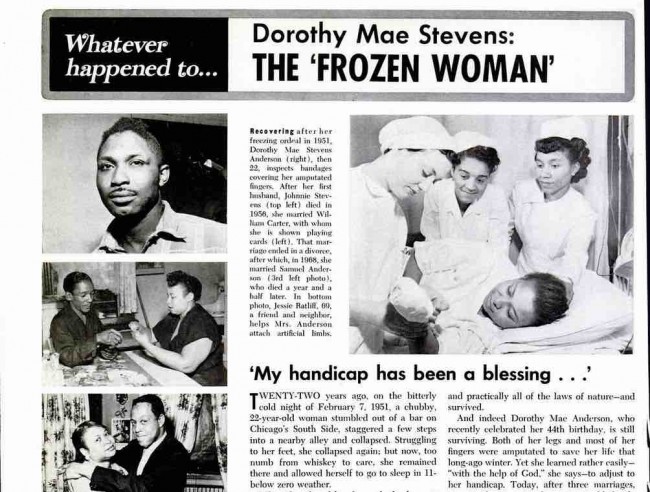
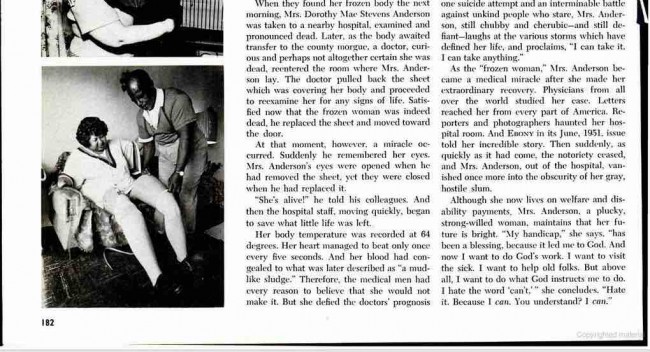
Original article here.
Alas, two years after the coverage above, she was gone.
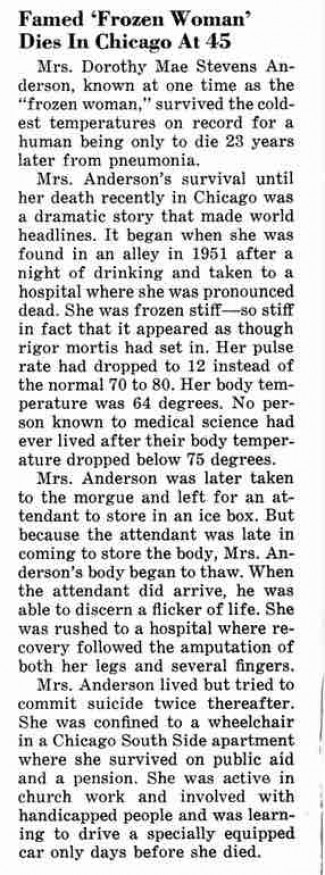
Original article here.
Posted By: Paul - Thu Nov 17, 2016 -
Comments (6)
Category: Body, Human Marvels, Medicine, Nature, 1950s, Alcohol
Tandem Smoker
Introduced in 1955: Jonathon Law's Tandem Smoker, aka the "sure-fire lonesomeness ender.""The inventor envisions each lonely man packing a Tandem Smoker. All he has to do is light up, offer a passerby a mouthpiece, and the device will do the rest."

Image source: Fuzzy Dave

Independent Press Telegram - Sep 30, 1956

And you too could soon be smoking in tandem, because there's one available for $95 on eBay.
Posted By: Alex - Mon Nov 14, 2016 -
Comments (5)
Category: Smoking and Tobacco, 1950s
Post Toasties
Here's an ad campaign over the course of a decade or so that shows the Mad Men flailing around blindly. Whom do we appeal to? Kings, Indian Chiefs, housewives, nursery-rhyme characters, despotic sea captains, or cartoon animals? Or, in the end, the anti-hippie conservatives embodied by Andy Griffith and his fancy-neckwear disparagement?
Posted By: Paul - Sun Oct 30, 2016 -
Comments (2)
Category: Business, Advertising, Food, 1950s, 1960s
Plasticville, USA
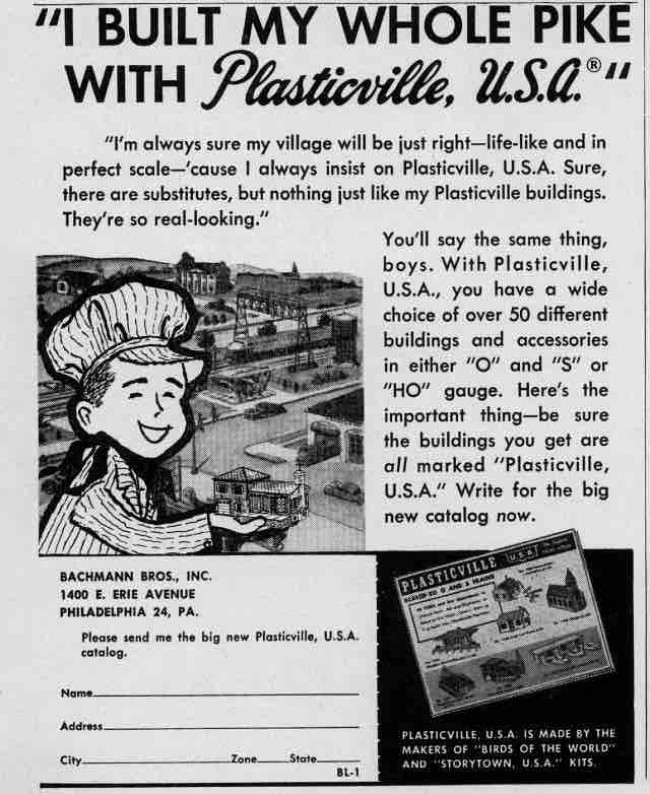
Original ad here.
With no trace of modern irony, Plasticville USA was once deemed a grand name for an imaginary town. Somehow I can hear a beatnik of the era saying, "Plasticville, man, that's for squares!"
Wikipedia entry here.
More info and some great pictures on this page.
More images via Google.
Posted By: Paul - Sun Oct 23, 2016 -
Comments (3)
Category: Toys, Urban Life, Bohemians, Beatniks, Hippies and Slackers, 1940s, 1950s
Fabulous Lady Diet Food
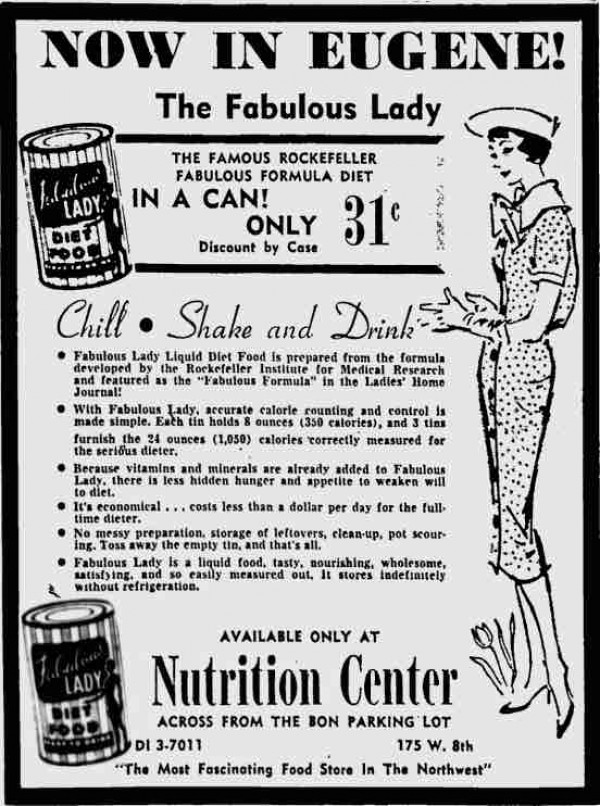
This is one of those rare instances where I can learn nothing on the internet about an old-time product. I suspect it was simply a forerunner of such drinks as Metrecal. If anyone can discover the secret ingredients of this drink, or even more press about it, they will be a master sleuth!
Original ad here.
Posted By: Paul - Thu Oct 20, 2016 -
Comments (6)
Category: 1950s, Women, Dieting and Weight Loss
Polka Dotted Poliwampus
Posted By: Paul - Wed Oct 12, 2016 -
Comments (5)
Category: Humor, Music, Surrealism, 1950s, Fictional Monsters
Destination Atlantis
Auto mechanic Frank Russell of Biggleswade, England spent two years building a submarine in his backyard. He did it, he said, so that he could find the "lost city" of Atlantis. He described the construction of the sub in an article distributed by International News Service (Dec 1949):Practically all the parts have been cut, filed and even some of the holes drilled with ordinary hand tools, though I did manage on several occasions to borrow an oxy-acetylene cutter and an electric drill.
I have built this craft entirely by myself except for some of the more tricky points of welding on the hull. This was done by a friend, who is a highly skilled factory welder.
This submarine has been built entirely out of second-hand steel plates and scrap from local yards. Oxygen cylinders, motors, batteries, and the like are all from government surplus sales. The only new items are the glass observation ports and some rivets and bolts.
The launch date for his sub was November 4, 1950. Unfortunately, I can't find any reports about the launch, but I'm assuming he didn't find Atlantis.
And I'm guessing he may have been pulling everyone's leg about wanting to search for Atlantis, because eight years later he was back in the news as the perpetrator of an elaborate UFO hoax involving a "do-it-yourself space ship made of wire, silver paper, clockwork and a couple of flashlights." So it seems that he was a bit of a practical joker.

The Eagle (Bryan, Texas) - Nov 8, 1950
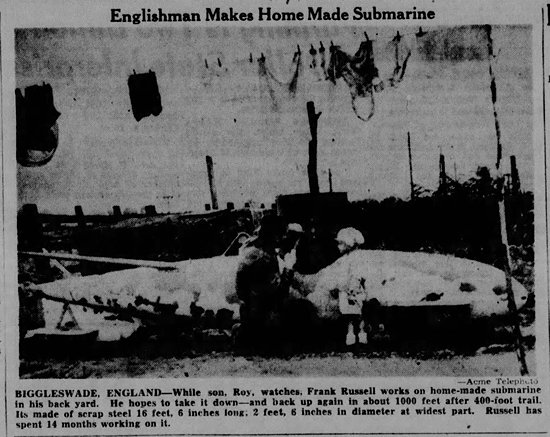
New Castle News - Oct 7, 1949
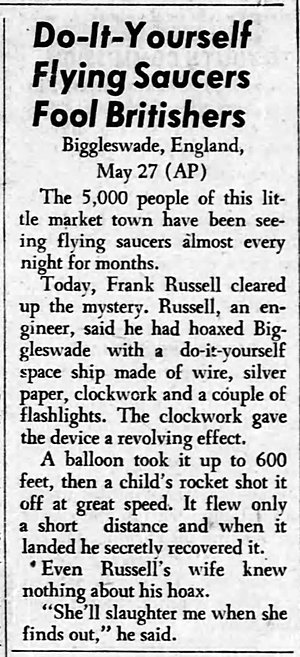
The Decatur Herald - May 28, 1958
Posted By: Alex - Tue Oct 11, 2016 -
Comments (2)
Category: Boats, Hobbies and DIY, 1950s

| Who We Are |
|---|
| Alex Boese Alex is the creator and curator of the Museum of Hoaxes. He's also the author of various weird, non-fiction, science-themed books such as Elephants on Acid and Psychedelic Apes. Paul Di Filippo Paul has been paid to put weird ideas into fictional form for over thirty years, in his career as a noted science fiction writer. He has recently begun blogging on many curious topics with three fellow writers at The Inferior 4+1. Contact Us |




